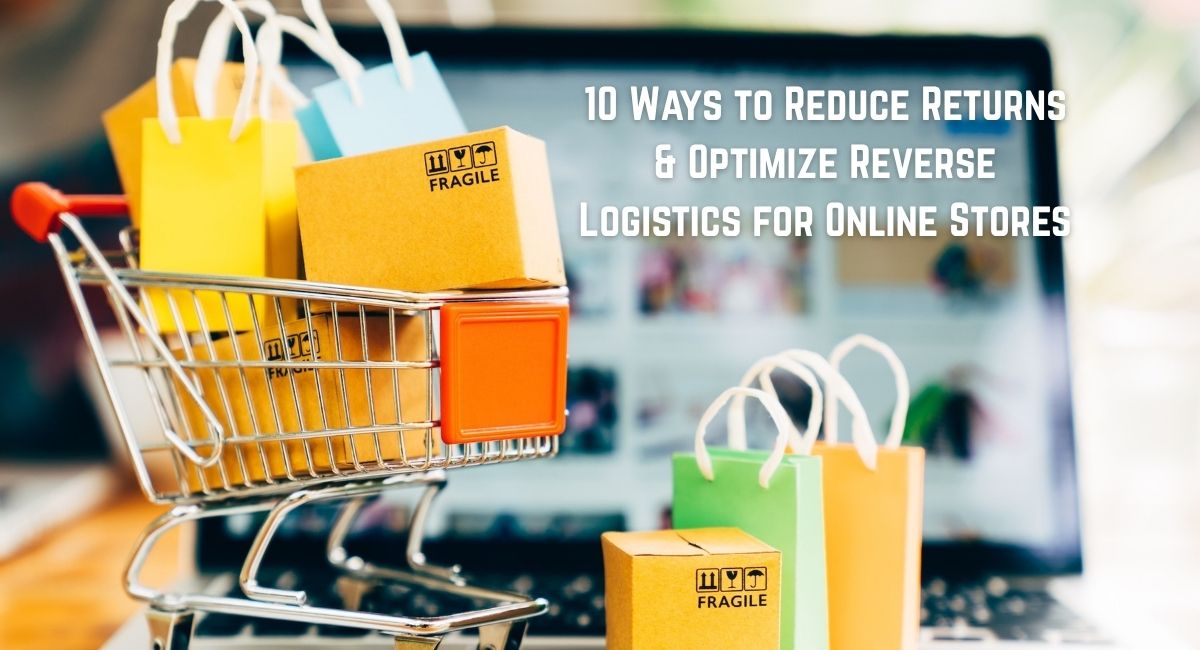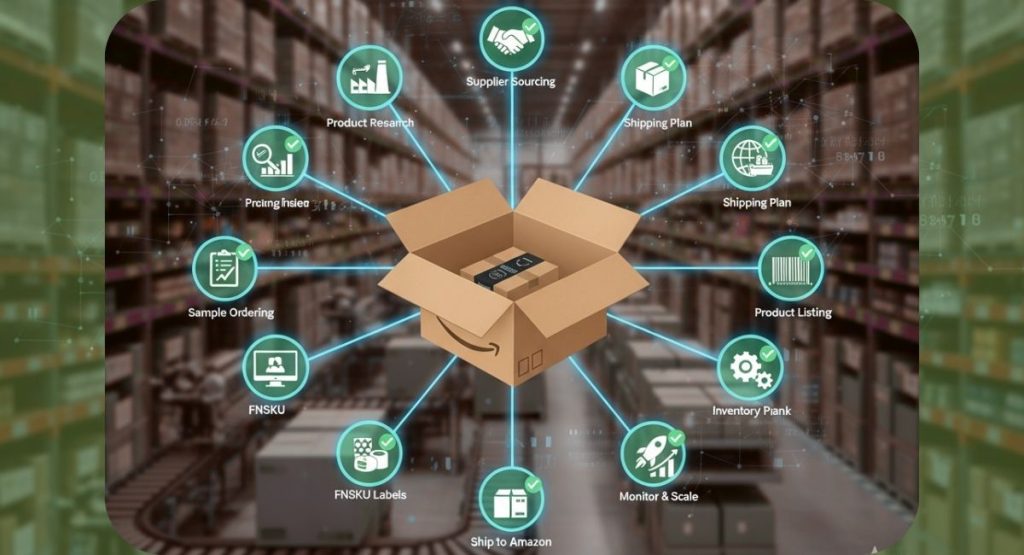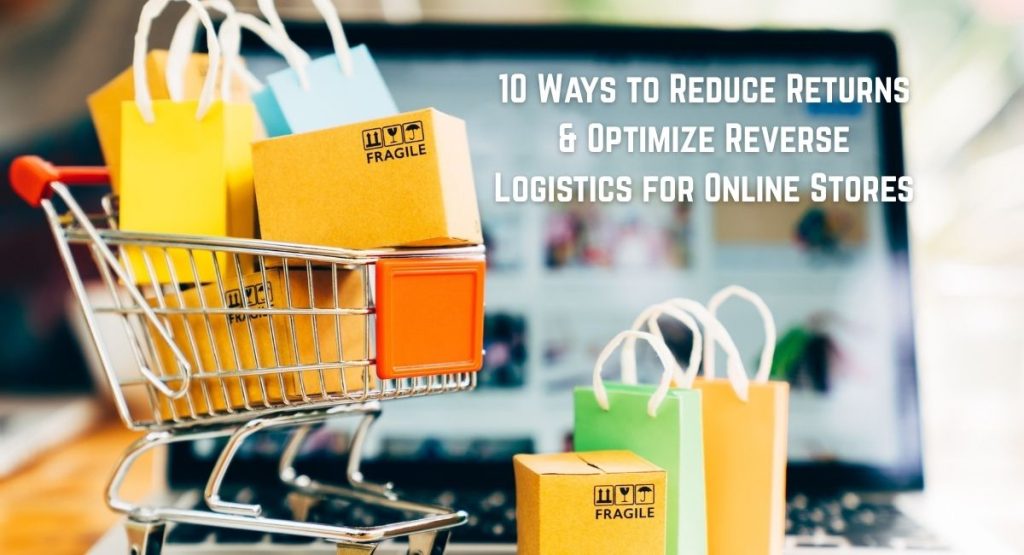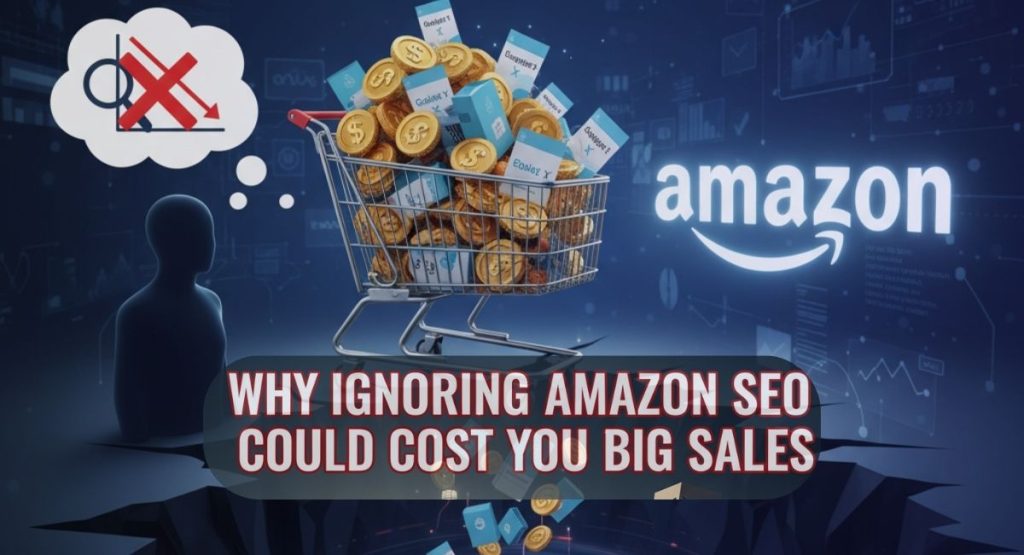Every online store owner knows the excitement of seeing orders come in. But that feeling can quickly fade when customers start sending products back. Returns are part of the eCommerce reality, yet when they happen too often, they drain profits, increase operational complexity, and damage brand reputation. Understanding how to reduce returns and streamline reverse logistics isn’t just about saving money. It’s about creating a better shopping experience that earns customer trust and loyalty.
Many brands focus heavily on the forward logistics process, how to get a product from the warehouse to the buyer, but few invest the same attention in what happens when items move in the opposite direction. Reverse logistics, when handled efficiently, can actually turn a potential loss into an opportunity to recover value, improve operations, and retain customers.
If you already run an eCommerce business or plan to launch one through a professional solution like eCommerce web development, this guide will show you practical strategies to minimize product returns and build a return system that enhances your overall business performance.
Below are ten actionable ways to reduce returns and optimize reverse logistics for your online store.
1. Strengthen Product Information and Visuals
One of the biggest reasons customers return products is that what they receive looks or feels different from what they expected. Poor product descriptions, unclear images, and incomplete information often mislead buyers. This is why improving your product content should be the first step in minimizing returns.
Detailed and honest product listings create accurate expectations. Make sure every product page includes:
- Comprehensive specifications like dimensions, materials, weight, compatibility, and care instructions.
- High-quality images taken from multiple angles, including close-ups that highlight texture or intricate details.
- Videos showing how the product works, how it fits, or how it can be used in daily life.
- A section for frequently asked questions and verified customer reviews.
If your website doesn’t support interactive visuals or 360-degree product views, consider improving its framework through custom web development. This allows you to display richer content and enhance transparency. You can also refine your written descriptions through product description writing services that focus on clarity, emotional connection, and conversion.
When customers know exactly what they’re buying, they’re less likely to feel disappointed or surprised when the product arrives.
2. Use Smart Sizing and Fit Tools
Sizing issues account for a large percentage of returns, especially in fashion, footwear, and accessories. Customers often order two sizes to try on at home, returning the one that doesn’t fit. This habit costs online stores millions each year.
A clear size guide is good, but interactive or AI-powered sizing tools are even better. When you give customers personalized recommendations based on their measurements, you drastically reduce the risk of returns.
Here’s how to improve your sizing experience:
| Category | What to Include | Example |
| Apparel | Bust, waist, hip, sleeve length, model size | Include “Model is 5’8 wearing size M” |
| Footwear | Foot length and width, conversion chart | Add fit tips like “runs small” |
| Accessories | Dimensions and adjustable features | Include product-on-model photos |
You can integrate these features directly into your product pages with the help of Shopify web development or WooCommerce customization services. These tools analyze data from past purchases and help customers choose the most accurate size, reducing the uncertainty that often leads to returns.
The more personalized and data-driven your sizing process becomes, the lower your return rate will be.
3. Improve Packaging to Prevent Damage
It’s frustrating for customers to receive damaged items, and it’s equally expensive for stores to handle the resulting returns. Damaged goods are one of the most preventable causes of returns, yet many brands underestimate the importance of packaging design and quality control.
Good packaging protects products from impact, moisture, and temperature changes during transit. It also communicates your brand’s care and professionalism. Consider these practical improvements:
- Choose sturdy materials that match the fragility of the product.
- Add internal padding or corner protectors for electronics and glass items.
- Seal boxes properly and include “handle with care” labels.
- Use sustainable materials to appeal to environmentally conscious shoppers.
- Include clear instructions on how to repackage items in case of a return.
Packaging can also influence customer satisfaction beyond protection. A well-designed box creates a positive unboxing experience, which psychologically encourages customers to keep the product. The fewer negative surprises, the lower your reverse logistics volume.
4. Automate Return Authorization and Tracking
A smooth return process doesn’t mean encouraging returns. It means creating an efficient system that reduces confusion and manual errors. Automation is the backbone of modern reverse logistics. When you use automated systems for return requests, shipping labels, and updates, your customers stay informed and your team saves hours of administrative work.
Key benefits of automation include:
- Instant return label generation, which simplifies customer experience.
- Real-time tracking for customers and internal staff.
- Integration with your warehouse management and inventory systems.
- Automatic email or SMS updates during each stage of the return process.
If your online store runs on an older platform or lacks integration capabilities, it might be time for a digital upgrade. A specialized website management service can help integrate return automation into your current system. When customers can easily initiate and monitor their returns, they feel secure, and your team spends less time resolving repetitive issues.
5. Offer Virtual Assistance Before Checkout
A major reason people return products is that they simply didn’t choose the right one. Confusion or lack of knowledge during the buying process often leads to mismatched purchases. Offering real-time help during shopping can dramatically reduce post-purchase regret.
Virtual assistants, chatbots, or live chat agents can guide customers through decision-making. These systems answer common questions like:
- “Will this product fit my needs?”
- “Is this compatible with my device?”
- “How long will delivery take?”
- “What are your return conditions?”
Live chat support humanizes the shopping experience, bridging the gap between digital and in-store assistance. It can also increase conversion rates while decreasing the likelihood of returns caused by misunderstanding. For in-depth strategies on implementing conversational tools, you can read using chatbots to increase eCommerce conversions.
Pre-purchase engagement doesn’t just reduce returns; it builds a stronger connection with buyers and promotes brand trust.
6. Analyze Return Data for Insights
Every return tells a story. It’s not just an operational hassle; it’s a signal that something in the buying or fulfillment journey went wrong. Instead of treating returns as losses, use them as learning tools.
Start by tracking key metrics. The goal is to find patterns that reveal which products, suppliers, or channels are contributing most to returns.
| Metric | Description | Use Case |
| Return Rate by Product | Percentage of total orders returned | Identify high-risk items |
| Return Reasons | Categorize by size, defect, or dissatisfaction | Fix product or listing issues |
| Time to Process | Average time to complete a return | Improve logistics efficiency |
| Return Cost | Direct and indirect expenses per return | Negotiate carrier contracts |
When you understand why returns occur, you can make smarter business decisions. For instance, if one supplier’s items consistently arrive damaged, it may indicate a need for stricter quality control. If many customers return items because the color looks different, you may need to adjust lighting in your product photography.
Data-backed decisions are far more effective than guesswork. Over time, your return rates will naturally decline as you refine each element of your operations.
7. Refine Reverse Logistics Processes
Reverse logistics refers to everything that happens after a product is returned: inspection, restocking, refurbishing, or disposal. When managed effectively, it reduces losses and strengthens sustainability. Unfortunately, many businesses handle it reactively rather than strategically.
Optimizing reverse logistics means building a process that’s structured, traceable, and cost-efficient. Here are some steps to improve it:
- Set up a dedicated returns area in your warehouse.
- Use barcode or RFID tracking to maintain visibility.
- Automate sorting to categorize items into resale, repair, or recycle streams.
- Train staff to inspect and restock returned items quickly.
- Partner with logistics providers who specialize in returns.
Centralized return management speeds up resale and reduces clutter. It also improves customer experience because replacements or refunds are processed faster. By monitoring every movement of returned goods, you gain better control over inventory and financial forecasting.
8. Set Clear Return Policies and Communicate Them
A transparent return policy can actually reduce returns because it builds trust. Customers are more confident buying from brands that clearly explain how returns work. Conversely, vague or hidden policies cause frustration, leading to chargebacks or negative reviews.
Your return policy should cover:
- The time frame within which returns are accepted.
- Conditions for product eligibility (unused, original packaging, tags attached).
- Who pays for return shipping.
- How refunds or credits are issued.
Make sure this information appears on product pages, checkout pages, and in confirmation emails. Use plain language that’s easy to understand. Avoid fine print that might feel deceptive.
Consistent communication of return policies can be supported by regular updates through website management services. This ensures your policy always reflects current logistics or legal requirements.
9. Recycle, Refurbish, or Resell Returned Items
Not every return needs to become a complete loss. Many returned products are still in excellent condition. Instead of discarding them, find ways to recover their value.
Here are practical approaches:
- Resell slightly used or open-box products at discounted prices.
- Refurbish items with minor defects and sell them under a separate category.
- Donate unsellable items to charities or community programs.
- Recycle packaging materials or product components responsibly.
These steps contribute to sustainability while improving your brand image. Customers appreciate environmentally conscious businesses, and you can even promote these initiatives in your marketing. Sustainable logistics also align with emerging consumer expectations and regulatory trends.
10. Improve Overall Customer Experience
At the heart of every successful eCommerce strategy is customer satisfaction. A strong product catalog and a reliable shipping process mean little if your customers feel neglected. Reducing returns ultimately comes down to improving the total buying experience from start to finish.
Focus on the following areas:
- Fast and reliable delivery with real-time updates.
- Clear post-purchase communication and follow-ups.
- Loyalty programs or discounts for repeat buyers.
- Easy access to customer service via multiple channels.
- Transparent product quality standards.
Satisfied customers return less often because they trust your brand. They also become advocates who spread positive reviews. Investing in customer experience isn’t just good for retention; it directly impacts return rates and long-term revenue.
To strengthen your brand’s visibility and engagement, consider pairing these strategies with a robust SEO strategy and blog writing to keep your content helpful and educational. Customers who understand your products better will make more confident purchasing decisions.
Frequently Asked Questions About Reducing Returns and Reverse Logistics
1. How can small online stores reduce returns without big budgets?
Small businesses can start by improving product descriptions, using better packaging, and offering prompt support. Even simple tools like detailed FAQs or measurement charts can reduce return rates significantly.
2. Is offering free returns a good strategy?
It depends on your profit margins. Free returns can build trust, but they should be managed carefully. Some stores offer free returns only for first-time customers or specific categories to limit costs.
3. How do I know if my reverse logistics is efficient?
Monitor your return processing time, resale recovery rate, and the cost of each return. If returns are processed quickly and you recover part of the value, your system is working well.
4. How can data analysis reduce future returns?
By tracking patterns and feedback, you can fix recurring issues at the source. Data helps you improve product descriptions, supplier quality, and packaging methods.
5. Should I discourage returns altogether?
No. A fair return policy encourages confidence. The goal is to minimize preventable returns, not to make them difficult. Balance flexibility with smart preventive measures.
Final Thoughts
Reducing eCommerce returns and optimizing reverse logistics takes consistent effort, but the results are long-lasting. Every small improvement from more accurate product listings to faster return handling—helps build a brand that customers trust.
Remember, returns are not just a cost; they are feedback. Each return gives you insight into how your products, descriptions, or operations can improve. By refining these areas, you can transform your return process into a powerful business advantage.
If you’re looking to build a store that reduces confusion, enhances product visibility, and delivers an optimized shopping experience, consider partnering with Maxim Blu. Their expertise in eCommerce development, SEO marketing, and conversion-focused design helps businesses streamline operations and achieve sustainable growth.
When your store operates efficiently and transparently, returns become fewer, customers become happier, and profits grow steadily.





